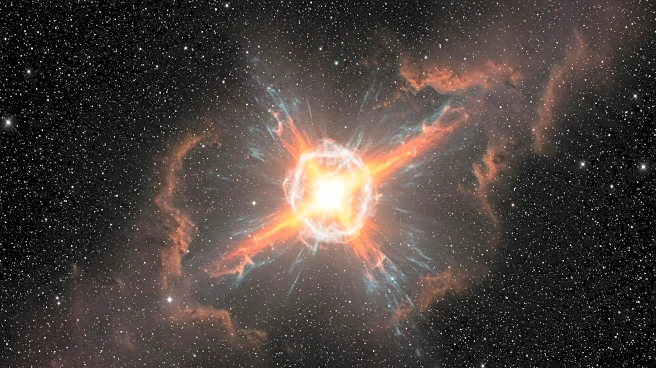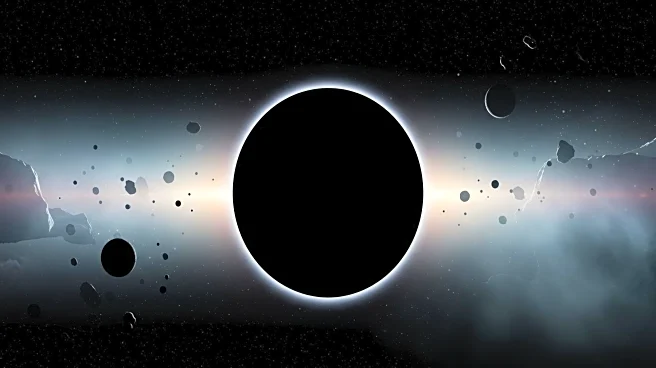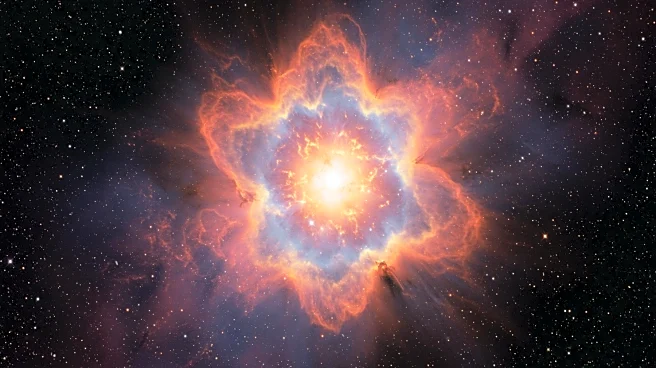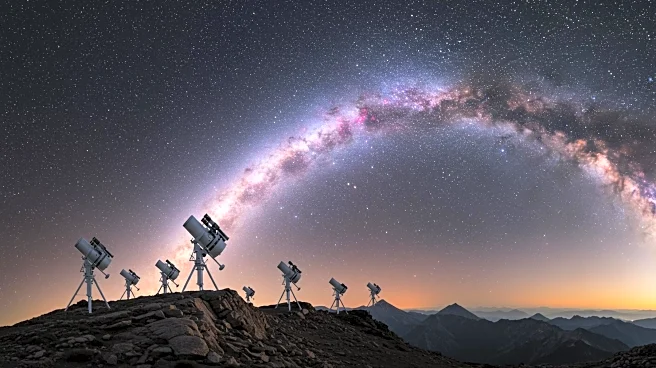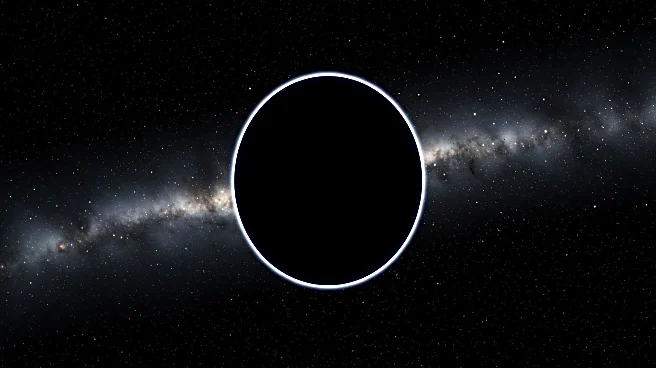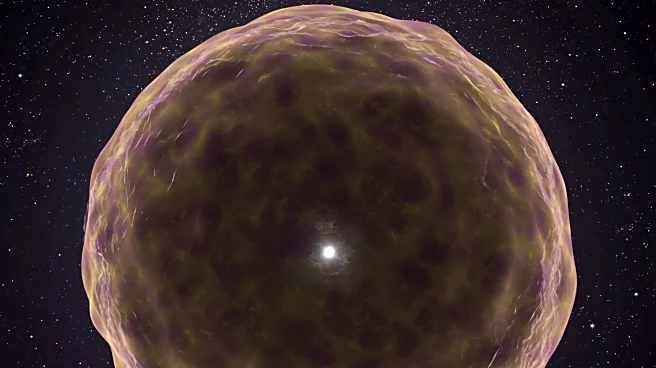Rapid Read • 7 min read
Astronomers have identified a new type of supernova, providing an unprecedented view into the internal structure of a massive star before it explodes. This discovery, detailed in a study published in Nature, reveals that the star had lost its outer layers of hydrogen, helium, and carbon before the explosion, exposing a layer of heavier elements like silicon, sulfur, and argon. This phenomenon, observed in supernova SN2021yfj, challenges existing theories about stellar evolution. The star, believed to be about 60 times the mass of the sun, had shed significant material before its explosion, a process not fully understood. The discovery was made using the Zwicky Transient Facility and confirmed with spectral data from the W. M. Keck Observatory.
AD
This discovery is crucial as it challenges the conventional understanding of how massive stars evolve and die. The observation of a star stripped to its core before a supernova explosion provides direct evidence of the internal structure of massive stars, which has been difficult to observe. This could lead to a reevaluation of stellar evolution models and improve predictions about the life cycles of stars. The findings also highlight the potential for discovering new types of astronomical phenomena, which could expand our knowledge of the universe and the processes that govern it.
The research team is exploring the possibility that the star interacted with a companion star or experienced strong stellar winds, leading to the loss of its outer layers. Further observations and studies are needed to understand the mechanisms behind such extreme mass loss. The discovery of this new supernova type, designated as type Ien, suggests that there may be more such phenomena yet to be discovered. Future surveys, like those conducted by the Vera C. Rubin Observatory, could help identify similar events, although capturing their spectra remains a challenge.
AD
More Stories You Might Enjoy
